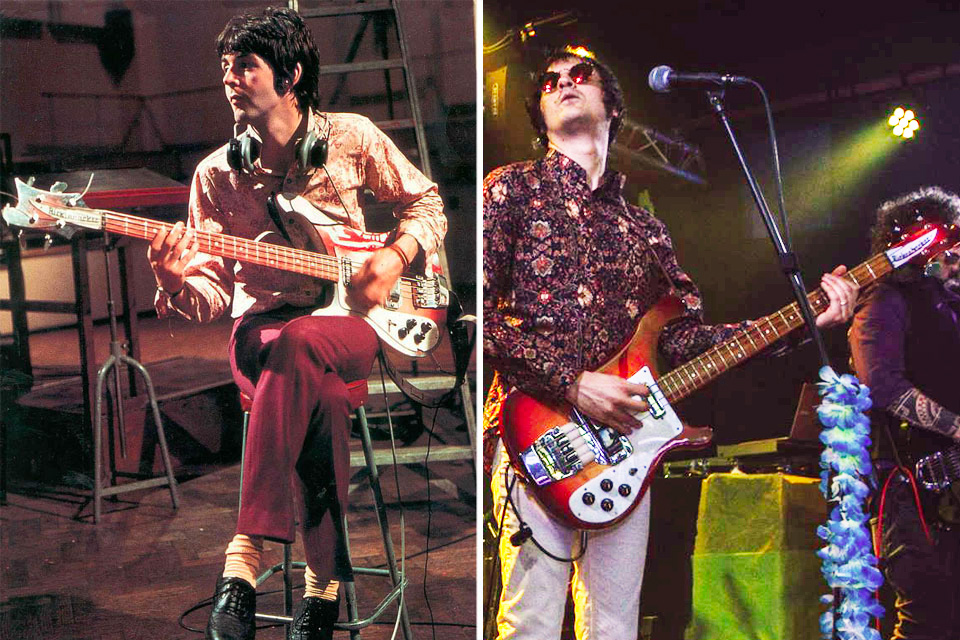Paul begins using it in the studio as early as 1965 on some tracks of Rubber Soul. With the switch to the 4001, Paul's bass sound and style also evolve in the Beatles' records…
Paul McCartney tries out the new 4001s in New York in February 1964. It is presented to him by the president of Rickenbacker, F.C. Hall, along with George's 360/12. However, since it's a right-handed bass, Paul has to wait until the Beatles' second visit to America a year later, for the concert on August 30th at the Hollywood Bowl. Guests at Burt Lancaster's villa include Roger McGuinn of the Byrds, Peter Fonda, and Joan Baez. This time, Hall offers Paul a left-handed bass, but with a right-handed neck, resulting in a reversed headstock.
Originally finished in “Fireglo”, McCartney paints it with psychedelic colors in 1967, in the true spirit of Magical Mystery Tour, before restoring it to its natural color in January 1969.
Paul begins using it in the studio as early as 1965 on some tracks of Rubber Soul. George Harrison vividly recalls its first use for his song Think For Yourself on November 8th. With the switch from the Höfner to the Ric, the bass sound and phrasing also change, from a traditional style to a new, almost experimental, melodic-rhythmic style, making McCartney a great innovator of this instrument. Rain, Paperback Writer, I'm the Walrus, With a Little Help From My Friends and many others are true models of taste, synthesis, and creativity.
In the photo: a 2010 Rickenbacker 4001c64, an official reissue of Paul McCartney's 4001, with a reversed headstock and 'Fireglo' coloring, like the one given to Paul in August 1965. You can see it in the videos for Rain, Something and Dear Prudence. Meanwhile, you can see the more modern Rickenbacker 4003 in the videos for I Am the Walrus, Paperback Writer and Strawberry Fields Forever.


